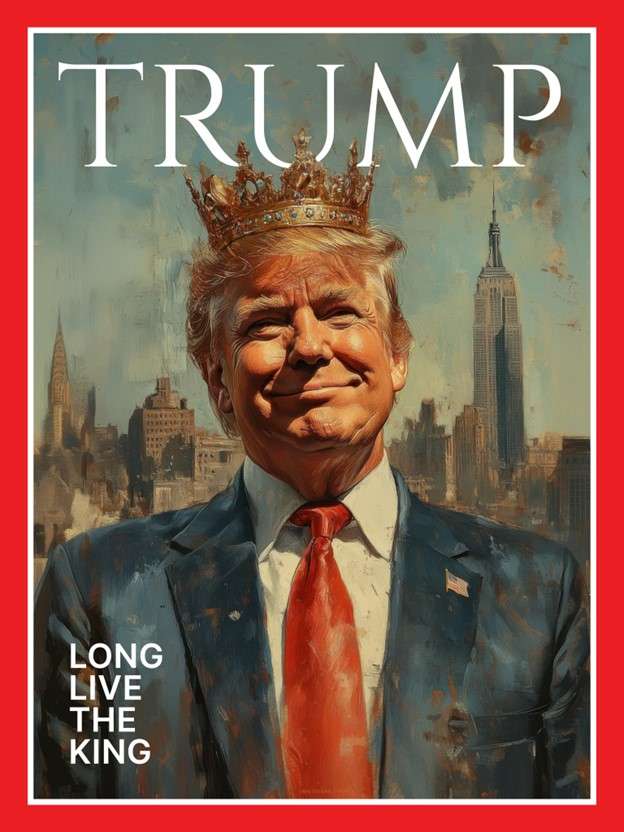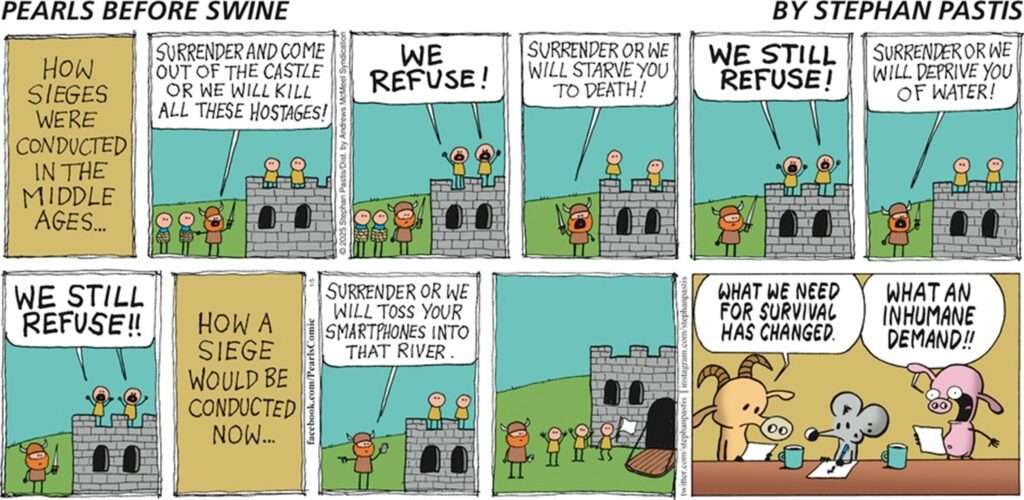
22 Feb The Trump Revolution, Continued
“What action(s) by the Trump Administration might cross a red line?” – The Lonely Realist
Government actions can cross a line…, which is a truism when it comes to the actions of revolutionary governments. Revolutionary governments rise to overthrow political, economic and social norms. The Trump Revolution is doing precisely that by replacing America’s current government systems, policies and practices with new ones, domestically and internationally. Whether doing so might cross a red line raises questions never before encountered. For example, it is accepted wisdom that revolutions jump across legal, ethical and moral lines…, and crossing those lines most certainly describes the Trump Revolution. But those lines are not red lines. America is a Constitutional democracy built on a Constitutional foundation. Purposeful defiance of Constitutional limitations, however, would cross such a line. It could – and probably would – mark the end of The American Democratic Experiment. At an extreme, it would risk the kinds of excesses experienced during similar periods of history…, though on a more volatile 21st Century scale. History teaches that revolutions devolve, that revolutions provide violent extremists with opportunity, and that enemy nations actively take advantage of the weaknesses and divisions arising during revolutionary times. Witness the French, Russian and Iranian Revolutions.
The American Revolution successfully established a novel political template. It overthrew monarchial government and substituted a unique form of shared, multicultural democracy – The American Experiment – creating a tripartite balancing of executive, legislative and judicial power. Although it failed to resolve the status of ~700,000 American slaves, it established a new framework for defining freedom that some 75 years later resulted in an end to slavery. It was not a smooth transition. Following the Civil War, America continued experimenting. Don’t be misled by the tranquil descriptions of American Exceptionalism written in American history books. American history has been anything but peaceful and serene. One consequence of the American Revolution was the continued competition between States, notably free and slave States, which resulted in the Civil War, a bloody conflict that was followed by the fiasco of Reconstruction, then reverse Reconstruction and 160 years of racial segregation, on-again/off-again immigration battles, racial/immigration disorder, and an extreme boom-and-bust economic cycle. American history is chockfull of ups and downs and conflicts and failures. Yes, American democracy has withstood the test of time, but doing so has been far from seamless. American democracy has been a >230-year experiment.
The 20th Century began with firmly embedded segregation, massive income inequality, immigration conflict and a deep 1907 depression that required the intervention of John Pierpoint Morgan, destabilizations that could have ended democracy…, but didn’t. The Great Depression that began with the Stock Market Crash of 1929 could have triggered revolution (and almost did) in much the way that post-WWI revolutions in Russia and Germany lured so many Europeans to communism and fascism…, and lured many Americans as well. The Depression instead led to the FDR Revolution, which ushered in an era of centralized government control and regulation, beginning a sea change in The American Experiment. Despite the post-WWII conviction that America, the new global hegemon, had realized its destined world-leadership role, had succeeded in becoming a “Nation of Immigrants,” and had banished global disorder through Pax Americana, the next decades showed each to be illusory, with an accelerating Cold War, the assassinations of JFK, Martin Luther King, Jr. and Robert F. Kennedy, the humbling of an American Presidency through the Watergate scandal, American defeat in Vietnam, the attempted assassination of Ronald Reagan, a stock market crash, renewed recessions, etc.
America has suffered its traumas precisely because American democracy is experimental. It is not static. It necessarily must adapt to changing times…, which is why the Trump Revolution should be viewed as a continuation of a constantly evolving American Experiment. Cornerstones of the Trump Revolution include dismantling the “Deep State” and withdrawing America from global involvements by placing America First, “disruption” in every sense of the word. In the process, there is fear that Trump 2.0 will cross the line that separates American Democracy from autocracy and an oligarchy of billionaires. The fear is of a fascist/1930s outcome and, as a consequence, the fearful stand accused of what MAGA purists call Trump Derangement Syndrome (TDS). Those same MAGA purists are confident that President Trump’s policy prescriptions evidence masterful negotiating skills that can bring only positive change to America’s corrupt government and Americans’ perceived declining quality of life. They foresee No Unanticipated Consequences from the Trump 2.0 reconstruction of America’s political, economic and social systems. TCS purists accuse them of being NUt-Cs.
And then there are those in the middle who wonder whether there is a line between evolutionary democracy and the demolition of The American Experiment and, if so, where that line should be drawn. The first few weeks of the Trump Administration provide a few clues to that future.
The first step taken by Trump 2.0 was to delegate budget-cutting authority to Elon Musk – and yes, despite hairsplitting explanations, that’s precisely what the President has done. As TLR previously noted, Trump 2.0 promised revolutionary changes and DOGE is his vehicle to deliver on that promise. The President is the Chief Executive of America’s government and has the authority to designate persons to whom he delegates various levels of authority. Doing so doesn’t cross any Constitutional lines.
A more extreme step taken by Trump 2.0 was to pardon all January 6, 2021 cop-killers, convicts and miscreants. Doing so crossed a moral, ethical and precedential line…, but not a Constitutional one. Trump 2.0 simultaneously purged federal prosecutors who had worked on January 6-related cases, ordered a McCarthyesque probe of FBI agents who had investigated the January 6 attack on the Capitol, and began a pogrom of eliminating non-Trump believers from all levels of government. Doing so also did not cross a Constitutional line, but provides evidence of a turn towards autocracy.
A yet more extreme step was the Attorney General’s instruction ordering government lawyers to drop criminal charges against NYC Mayor Eric Adams. The directive led to the resignation of the acting U.S. Attorney for the Southern District of New York, Daniele Sassoon (a member of the Federalist Society who had clerked for Justice Antonin Scalia), that triggered threats of retaliation from the Trump Administration. As the Wall Street Journal editorialized, “The Trump Administration [has acted] on its belief in the unitary executive that enforces discipline across the executive branch, and we sympathize with that goal. But one argument against the unitary executive is that there is no check on corruption. The Adams case, with its tolerance of alleged corruption, isn’t a good look…. Worse is the lesson for Administration lawyers … that rather than exercise individual legal judgment, they’d simply better salute without cavil—or else the Administration will ruin their reputations…. Let’s hope the trial of Danielle Sassoon isn’t the model for the next four years.” Fears of corruption have multiplied with the Trump Administration’s Executive Orders that include suspension of law enforcement in various areas, including with respect to the Foreign Corrupt Practices Act.
What would tip the Trump Administration over the red line would be an act that disregards Constitutional safeguards. It is concerning that President Trump has accused judges who have paused his apparently unConstitutional Executive Orders of themselves violating the Constitution. What is more concerning are his actions that flagrantly ignore the Constitution. Among them are the “pausing” of spending authorized by Congress, the effective dismantlement of the Congressionally-mandated Consumer Financial Protection Bureau and U.S. Agency for International Development, the barring of birthright citizenship, ordering Federal funds to be withheld from States refusing to comply with his Executive Orders, ordering the dismissal of a member of the National Labor Relations Board, and winks and nods about seeking a third Presidential term (noted here and here), all of which cross Constitutional lines. However, the red line should not be treated as having been crossed until and unless President Trump defies a Supreme Court ruling. That could happen with respect to one or more of the foregoing…, or with respect to an as-yet to be violated Constitutional proscription. Time will tell.
Finally (from a good friend)





tronzi
Posted at 07:25h, 23 FebruaryRespectfully, I suggest that phrasing the debate in terms of constitutional limitations, “the deep state” and “America First” normalize, if not aggrandize, the destruction of the institutions that keep the U.S. and the world stable and democratic.